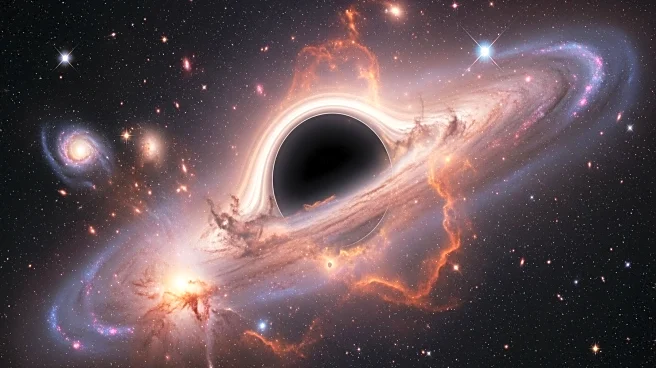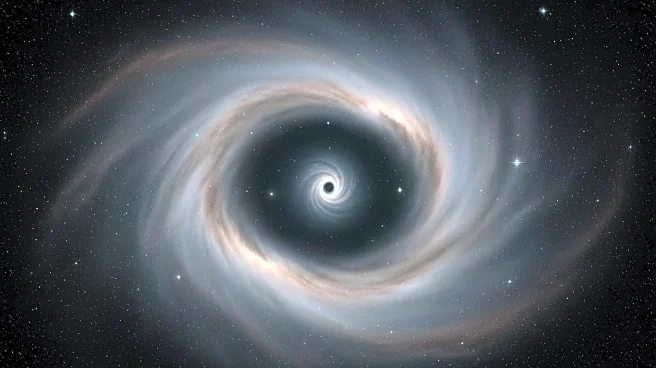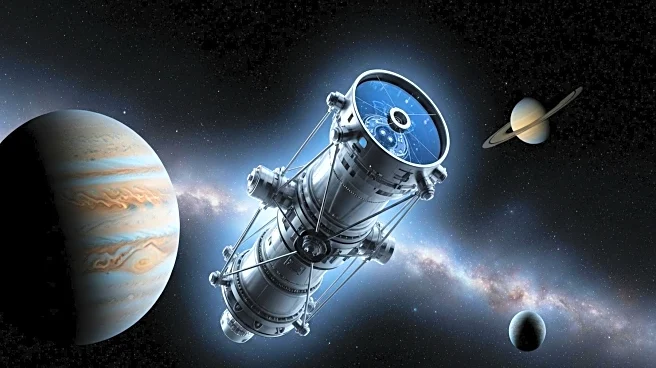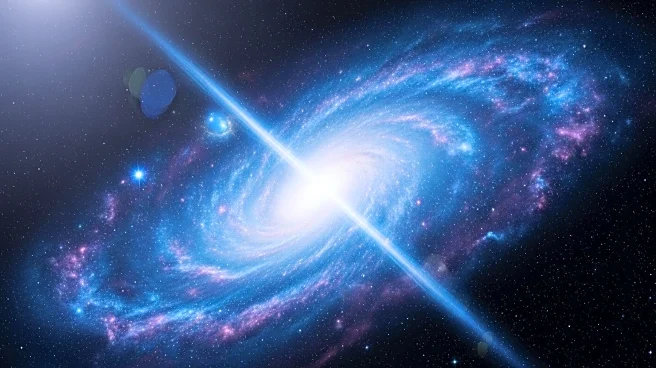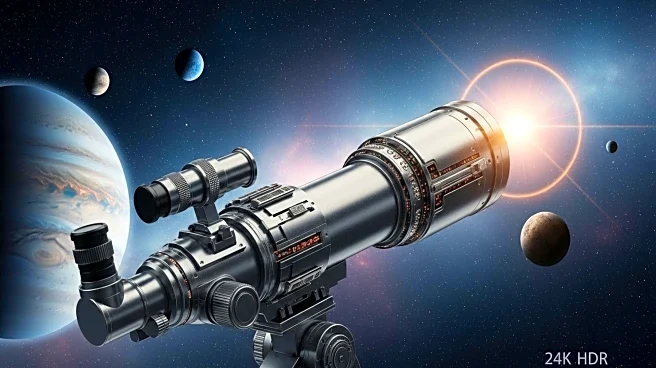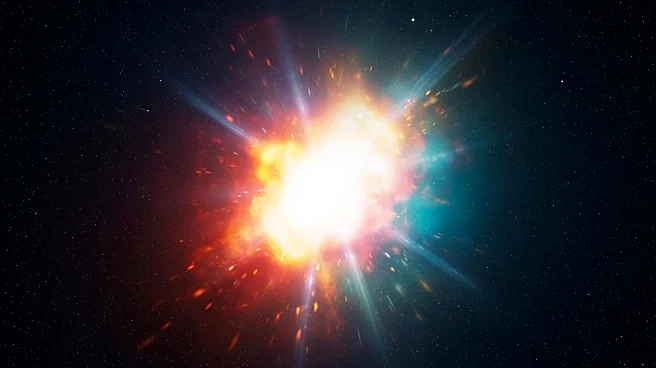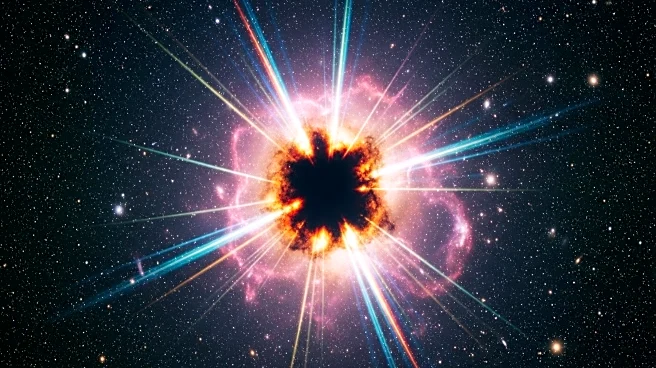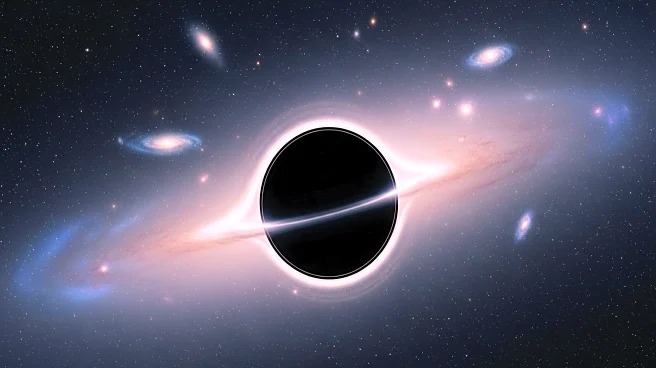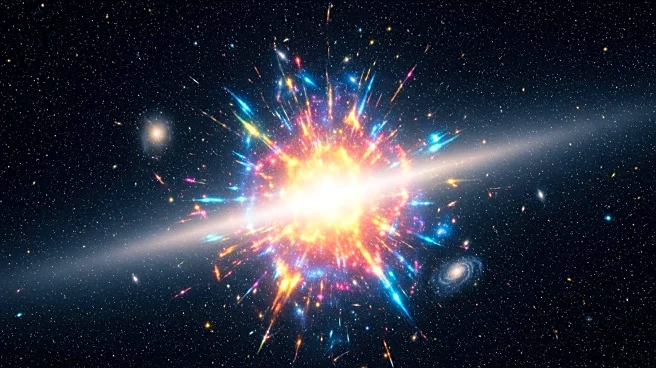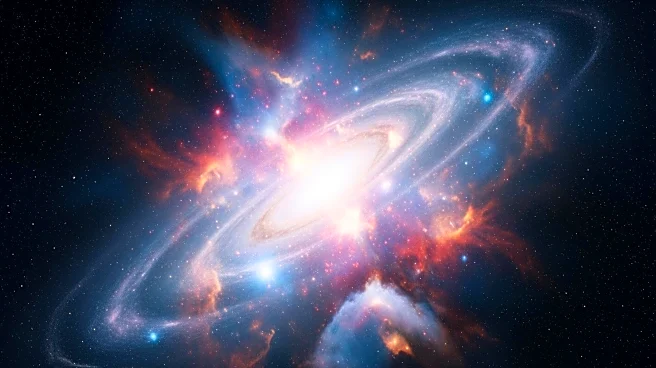What's Happening?
Astronomers have discovered seven supermassive black hole-powered quasars surrounded by dust, dating back to when the universe was less than a billion years old. Using the Subaru Telescope and the James Webb Space Telescope (JWST), researchers identified these quasars, which have long been suspected to exist during the early period known as 'Cosmic Dawn.' This marks the first detection of hidden but bright quasars in the early universe, suggesting that quasars could be twice as common at Cosmic Dawn as previously thought. The discovery was made possible by the unique combination of the Subaru Telescope's wide survey capabilities and JWST's ability to detect faint infrared light.
Why It's Important?
The discovery of dust-shrouded quasars at Cosmic Dawn is significant as it challenges previous estimates of quasar populations during this early period. Quasars are thought to play a vital role in shaping galaxies and the evolution of the universe. Understanding their prevalence and characteristics can provide insights into the formation of early supermassive black holes and the conditions of the early universe. This research highlights the effectiveness of combining different observational techniques to uncover hidden cosmic phenomena, potentially doubling the estimated population of quasars at Cosmic Dawn.
What's Next?
The research team plans to further study these obscured quasars to understand why their environments differ from unshrouded quasars. They aim to hunt for more shrouded black holes in a wider sample of galaxies from early cosmic epochs. This work could reveal the full population of supermassive black holes at Cosmic Dawn, offering deeper insights into the universe's evolution and the formation of galaxies.
